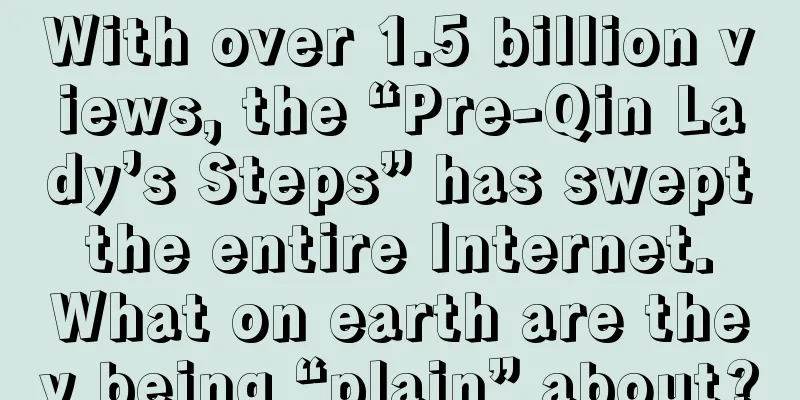Overcoming the Instinct of Thinking: Cognitive Dissonance

Today, let’s continue to talk about the thinking instincts that plague data analysts. Today, let’s talk about the third thinking instinct, cognitive dissonance. 1. CaseLet’s look at a story first:
Why were everyone willing to come when they didn't have to pay at the beginning, but became unwilling to come when they were given 50 cents at the end? 2. ConceptSocial psychologist Festinger proposed the theory of cognitive dissonance. The theory of cognitive dissonance, as the name suggests, says that when two cognitions (ideas or beliefs) are inconsistent in our minds, we will feel a state of tension (dissonance). In order to reduce this unpleasant tension, we will spontaneously adjust our thoughts. Festinger conducted a classic experiment:
He gets paid so little, but finds this boring task interesting. He is simply a complete sucker. Why? Because if you think the task is boring but want to introduce it to others, there will be a dissonance between your cognition (the task is boring) and your behavior (introducing the task is fun). So the brain starts to adjust itself: Volunteers who received $20 no longer experienced cognitive dissonance because the pay was good: they still thought the task was boring, but the money rationalized their behavior, “I did this for the money.” As for the volunteers who only received $1, the reward was too low to justify their behavior: they thought, how could I sell my conscience for $1? So they adjusted again, they spontaneously changed their attitude, thought that this task was really interesting, and therefore had a higher evaluation of the task. Cognitive dissonance is the brain's attempt to find an appropriate motivation for its behavior. Let’s go back to the initial case of the naughty kid. At first, the naughty child just thought it was fun to play in the garden, and his behavior was motivated by playing. Later, after the old man gave them money, the children's motivation became monetary incentives . When the monetary incentives were reduced from 5 yuan to 50 cents, the motivation of monetary incentives was not enough to support the action. There will be inconsistency between their behavior and goals, and they will eventually give up the behavior. There are many such examples in life:
3. How to deal with it1. Empty Cup MentalityAn empty cup mentality can help us avoid cognitive dissonance. The empty cup mentality means that when we accept new things, our mentality should be like an empty cup, without any preset ideas or prejudices, so as to better accept new information and understanding. If we have fixed beliefs and prejudices, we will automatically filter out some information that we think does not conform to our beliefs when we receive new information. In this case, we will ignore some valuable information, which is a manifestation of cognitive dissonance. If we can maintain an empty cup mentality, we will be more open and inclusive, able to accept more information and thus understand things better. I recommend a book called "Flow" , which introduces a state of "flow" that humans experience when they are fully engaged in an activity. This state requires an empty cup mentality to achieve. 2. Critical thinkingCritical thinking can also help avoid cognitive dissonance. The empty cup mentality is about acceptance, allowing information that is easy to ignore to enter our brain. Critical thinking is about questioning, allowing the information that has already entered the brain to be verified. Critical thinking can help us examine and evaluate our beliefs and opinions. Sometimes, our beliefs may be based on bias or misunderstanding, which may lead to cognitive dissonance. Therefore, we need to examine our beliefs and opinions through critical thinking to identify and correct the errors and biases in them. In this way, we can understand ourselves and the world more objectively and accurately. I recommend a book on critical thinking , "Thinking and Standpoint" , which mentions many methods of critical thinking. 3. Fighting poison with poisonCognitive dissonance is a brain instinct that everyone has, whether it is good or bad. Since it is difficult to change, it is better to think about how to make use of it. It is painful to get up early every day to study, because although I know that learning is a good thing, getting up early is also painful. In most cases, the cognition of pain overcomes the cognition of learning. So I procrastinate and don't take action. But if you can post a circle of friends to check in on your reading, then the motivation changes from studying to showing off your presence . So the next morning, you will be worried that if you don’t get up early today, won’t it seem that you have no perseverance and are a boaster? So the brain tells itself that it must get up early for the sake of face. Therefore, cognitive dissonance becomes the nemesis of laziness and a boost to our learning. After a while, when I have checked in for more than ten consecutive days, it will be easier to keep going. Because I have checked in for more than ten consecutive days, and it will be a full month in a few days, it would be a pity to give up now. So this compulsion drives you to continue to complete your study plan. Author: Jason Source: WeChat public account "Sanyuan Variance" (ID: sanyuanfangcha) |
<<: "AI Stefanie Sun" becomes a top streamer on Bilibili, with millions of views
>>: Copywriting breakthrough: imagination or insight?
Recommend
Hit the rhythm of new product launches and create brand characteristics with creative content|Blue V research on digital 3C brands
In the fiercely competitive digital 3C market, bra...
The truth is always hidden in the comments section
As long as it is a social platform, there is a com...
With sales of 5 million overnight and an increase of over 4 million followers, it took on the heat of the "business war", but is the challenge just beginning?
As the incident of a head anchor fermented, the he...
How to fill in the return address on Shopee? What are the rules?
Nowadays, many people like to buy imported goods, ...
Persuasive marketing is becoming the traffic code of Xiaohongshu
Recently, "advisory cultural tourism" ha...
How to do wish drop shipping? What are the advantages?
Nowadays, most people want to do drop shipping. If...
How are prices set for Amazon's seven-day promotion? Can the seven-day promotion be canceled?
In the field of e-commerce, promotions are one of ...
This "Dragon Boat Festival" business is booming, a handful of "grass" costs hundreds of yuan, and some merchants earn millions a month
During the Dragon Boat Festival, sales of mugwort-...
How Coach came back from the dead
Against the backdrop of a slowdown in the global l...
What happens if Amazon is complained about for using someone else's pictures? What should I do if I am complained about?
In the field of e-commerce, Amazon's platform ...
eBay UK adds new features to Advanced Promoted Listings beta
eBay UK announced that it has developed new featur...
How to cancel Amazon joint account? What are the methods?
If you want to open a store on Amazon, you can lea...
Is it easy to be an Amazon customer service representative? Is it hard to be an Amazon customer service representative?
As the global e-commerce giant Amazon grows strong...
How to recover the money when Amazon store is frozen? What is the reason for freezing?
Now there are more and more merchants opening stor...
Small market, earning millions a month
With the development of street stall economy, vari...









